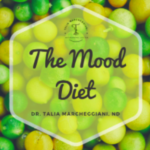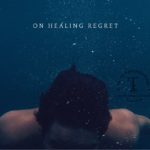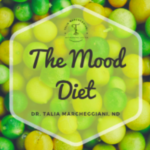Did you know that women who have a hysterectomy (removal of the uterus) can suffer from lack of creativity and a decrease in overall motivation after the organ has been removed?
According to Ayurveda, the uterus is an extremely Pitta organ. As an organ, it holds an abundance of potential for metabolic fire. It cycles through physical and hormonal changes each month and carries in it the capacity to support budding life. Pitta corresponds to fire, metabolism, motivation and creativity. Therefore, the result of removing this Pitta organ is a decrease in overall body fire, or agni, which can potentially decrease creativity and motivational drive.
When the uterus is extracted or begins to experience a decline in function, there is a growing sentiment that life is coming to an end, that the body is shutting down and that life cannot be lived as it once was. The reproductive lifestyle of the body terminates and therefore so must creativity and motivation. The result is a kind of resignation towards growth and a spiral into depression. Rather than have the freedom to move forward, the woman begins to feel dragged behind, drowning in the past, with only the ability to look back on the youthful fire she once had.
The Western medical model is reductionist in nature. That is not to say that professionals in this field aren’t true geniuses. These individuals undergo decades of vigorous study and immerse themselves in excruciating specificity and expertise. Medical doctors’ education enables them to diagnose uterine polyps, evaluate a women’s risk for uterine cancer and suggest that the uterus, complete with ovaries and fallopian tubes, be resected, in order to prevent inevitable death from the deadly diseases that prey on these organs. It then becomes a simple reduction: no organs = no disease. And this is true, to an extent. However, what is not included in this focused course of study are the psychological and emotional repercussions of such a decision. What is missing from the modern medical model are body ecologists: professionals who can determine the relationship that each cell has to every other and what happens to the whole when one of its parts is manipulated.
Ayurveda is a phenomenological science, based on years of observation of the body, and nature, working together as a whole. Based on observation, the effects of reproduction on creative capacity or other phenomena such as pre-menopausal adipose tissue on preserving bone density or bone density, which creates structure of the body, resulting in structure of the mind and the ability to concentrate, were connected. As with Chinese Medicine, the body is viewed as a functional whole, with each of its parts working together harmoniously. Remove one part and you lose, not just the function of that part, but the role that piece has in the greater whole. Likewise, losing a part of the body (calcium density in bones) and simply adding it back (via calcium supplementation) doesn’t replace the function of what bone density means to the psyche, physical strength and the ability to concentrate for long periods of time and feel emotionally stable. It also places a burden on the kidneys, which further affects the body’s ecological balance. Supplementation is a not a replacement for an ecological approach to health.
When throwing a pebble into a body of water, one not only affects the exact space in which the stone makes contact, but every molecule in the body adjusts to the ripple of the stone’s throw. Positive hydrogens and negative oxygens shift and manipulate each other, then recuperate themselves, finding their polar opposite and settling back into equilibrium. However, after equilibrium is achieved, the position of the molecules and their relationships with each other change. Old molecular partners form new ones and, as they resume their molecular dance, the steps have changed, for better or worse. Our bodies are mostly made of water so how can this rule not apply to us as well?
In extracting an organ, or even in adding something to the body via supplementation or pharmaceutical intervention, we affect the body’s entire ecology, just as dumping oil into a river affects that ecosystem. As naturopaths, I see our role as medical practitioners gravitating towards the reductionist medical model, albeit via “natural” interventions. However, can playing ball on this reductionist field ever really be considered natural? While freeing a woman from a potential future with a debilitating disease such as uterine cancer is, in many ways a valid act, how can the medical field give the patient the space to ask the burning question we’ve learned long ago to repress: how will this affect my being? How can this woman maintain her creative capacity and motivation? Is is still possible to stoke digestive fire and appetite for life after making the decision to eliminate the risk of deadly disease?
I believe that naturopathic doctors, with our knowledge of physiology and partnership with the healing power of nature, work best by featuring ourselves in the greater part of the story. Along with her medical team, we can inform the patient of the physiological nature of her disease. We can confirm that, based on the best current available evidence, a hysterectomy (or other medical intervention) is, in fact, the best decision for her (or not), as an individual. We can even prescribe herbs and give diet advice to improve the “terrain” in order to minimize negative side effects. However, where we really hold a place in the greater part of the body’s story is our ability to paint the relationship between the organ system in question and the rest of the body as a whole. We can listen to the patient’s experience of her disease and we can make note of how agni has decreased. We can then acknowledge this phenomenon and make plans to incorporate fire back into the patient’s life.
As naturopathic doctors, we can really serve our patients by acting as guides to help find a way for the ripples of the body to settle back into its harmonious ecological dance.







Reblogged this on My Blog.